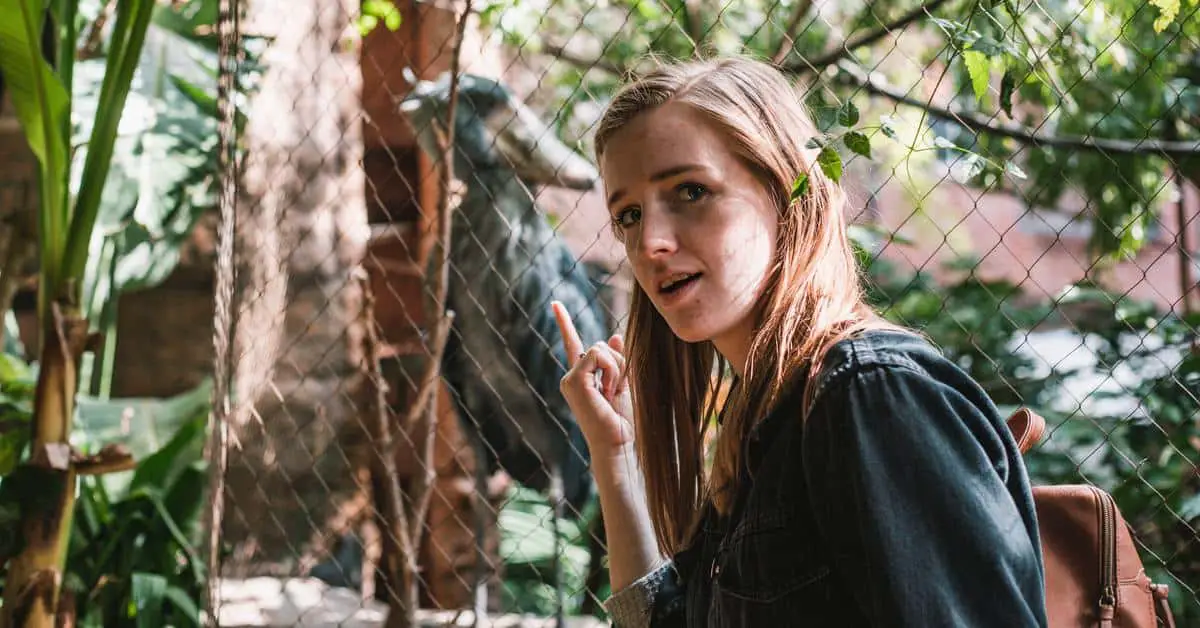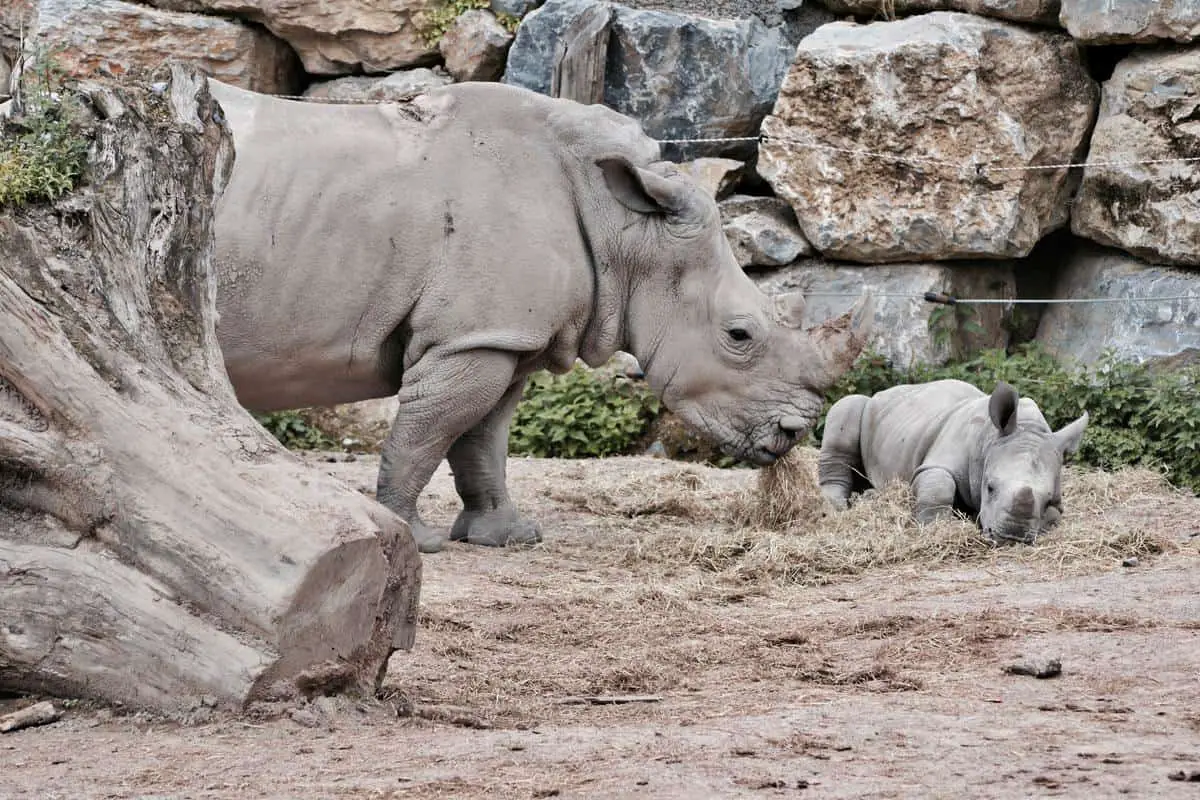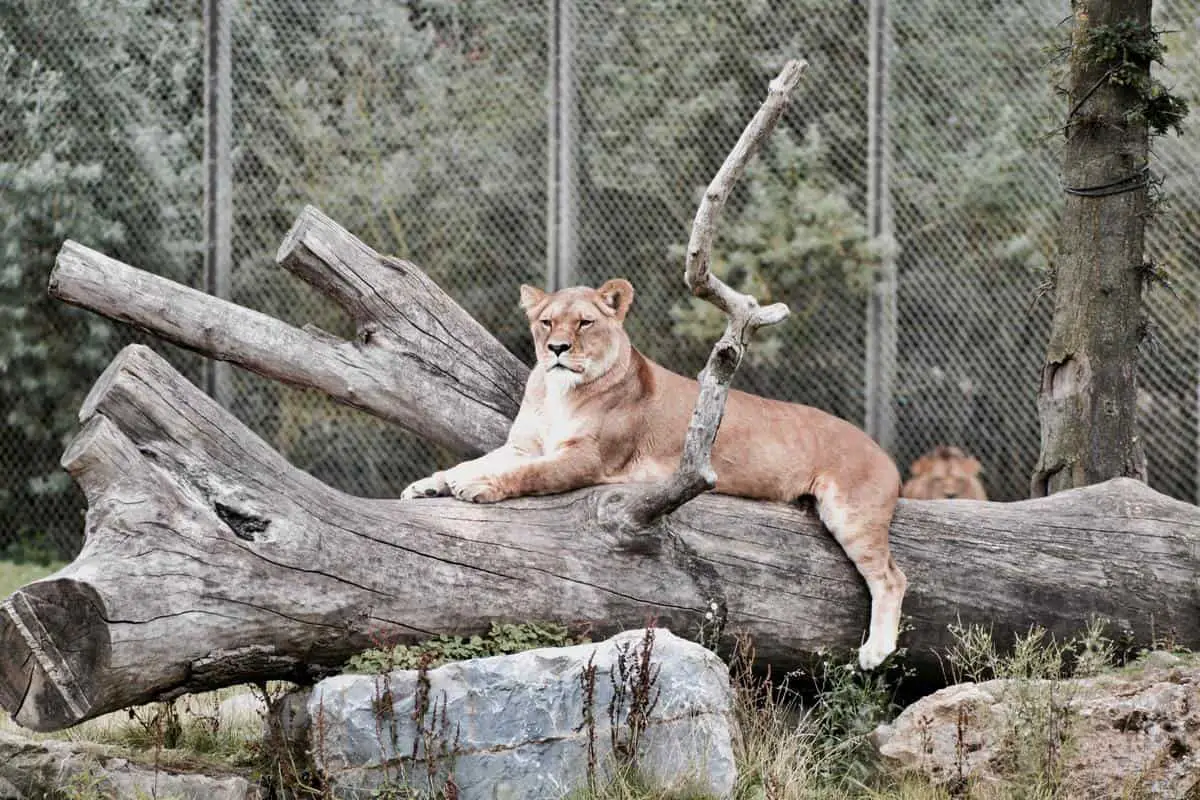Zoos are one of the only places that you can see animals interact with one another in a simulated version of their natural habitat.
As a child, you probably felt that the zoo was the coolest place to see and learn about animals. But the older you get, the more likely you are to ask yourself if zoos are cruel to animals.
Yes, zoos are cruel to animals. However, the perspective you take will depend on your school of thought. If you believe that zoos are necessary for animal conservation, you might see zoos as necessary. If you see zoos as unnatural habitats that keep wildlife captive, then you probably believe zoos are cruel.
This controversial topic has an argument to be made for both sides. Zoos are a standard part of society worldwide, – but that does not make it ethically right. The debate rages on, and in this article, you will get to see both sides of the tale.
The Positive Side of Zoos
Perhaps the biggest argument for the importance of zoos and aquariums for wildlife comes in the form of conservation. Zoos are known to carry some of the rarest and oldest species of animals in the world.
Several different factors have led to the decline of thousands of different animals and zoos are a safer way to preserve these lives.
Zoos and aquariums play an essential role in the fight against extinction. Some endangered species have even made a comeback through the preservation and help of certain zoos, these include :The animals listed above are only some of the more well-known endangered animals, but some subspecies have long been extinct. Not only do zoos do their part to preserve whatever amount of species remains of a particular animal, but they do their part in helping reproduction.
Many zoos have been a significant reason for spikes in the population of certain endangered animals.
Breeding programs have been in place for decades, and zoos often carry families of the same species dating back generations. The ultimate goal is always to reintroduce them to their natural habitats, but it takes time and patience.
Rehabilitation
The wild is a dangerous place. Many animals fend for themselves and never find a flock of their species to travel with.
Wildlife services work by travelling the world to find endangered species and animals struggling to survive and sending them to the rehabilitation centers at the zoos. This is especially true for many animals that are injured or misplaced in the wild.
The rehabilitation process takes time for many animals, but most will adjust if placed in the proper environment and taken care of correctly.
The rehabilitation program is designed to eventually get the animal back up to good health so that it can be reintroduced to its natural habitat. Some animals just end up staying at the zoo.
Sea turtles, manatees, and otters are among some of the animals that you will commonly find needing rehabilitation. Wildlife services often find these marine animals washed up on the shore, injured from natural causes, and unable to assist themselves. Wildlife organizations work together to heal these animals.
Many AZA’s (Association of Zoos and Aquariums accredited) work with U.S. Fish and Wildlife Services to help rescue and rehabilitate endangered sea life. Many zoos are specifically known for particular animals that they take care of and expertly rehabilitate. Wildlife preservation organizations work together to get these zoos the right resources.
Educational
Most people had their first experience at a zoo when they were younger. Whether it was for a class field trip or just a weekend activity with the family, a children’s initial interest in animals starts at an early age.
School curriculum carries several lessons based on animals, so what better way to put your knowledge to the test than with a field trip.
However, you don’t have to be a child to gain educational benefits from a trip to the zoo. You can learn a lot about the history, habitat, personality of a lot of animals, and some of the factors that have led to some of these animals ending up on the endangered list. Education can inspire the next generation of preservers.
You can learn several things about from animals and the environment during a trip to the zoo. And you can implement a lot of the conservational advice in your daily life once you head back home. Let’s take a look at some of the valuable lessons you can learn at the zoo.
Many zookeepers that work at the zoos are there because they share a love for animals. They do their best to educate others but also spend time nurturing and caring for the animals they are preserving.
These bonds are why you see zookeepers have relationships with animals like lions and tigers as if they were ordinary house cats.
Animal Research
The job does not stop at zookeeping. Researchers at zoos are constantly finding ways to protect their animals and find other animals that may need help.
People who work at zoos are some of the most educated people in the world when it comes to animal preservation and wildlife in general.
The research that zookeepers and zoologists do helps the rest of the world get behind positive initiatives and animal conservation programs that will positively affect wildlife going forward.
Working side-by-side with some of the rarest and most endangered animals in the world gives them a true understanding of their psyche.
The truth is that if our only source for animal research were from the natural habitats of these animals, getting anything done would be difficult.
Zoo research is necessary to help the effect humans have on the survival of wildlife animals. Zoo research will even help with things such as global warming and eco-friendly initiatives.
Some animals also become smarter at zoos. Interacting with humans and with other species highlights interesting research on how the minds’ of animals work.
In the future, humans hope to be able to interact with animals more openly. Zoo research and human to animal interaction is working wonders to achieve it.
Negatives of Zoos
Many of the benefits of zoos can be flipped and thought of as negatives. Besides protecting endangered species, keeping animals locked in unnatural habitats can be seen as cruel and unethical. While it is true that many zoo animals are endangered, many of them are also just there as attractions.
There are only so many endangered species in the world, so to believe that every animal you see in a zoo is there for conservation purposes would be naive. The same goes for animals in breeding programs.
Studies show that nearly half the animals in breeding programs are not endangered at all.
Animals that are not endangered should be allowed to reproduce and breed in their natural habitats. Breeding to produce more animals to send off to zoos as showcase animals is unethical. Many argue that only a tiny portion of a zoo’s budget goes towards animal conservation programs and initiatives.
Most zoos exist for profit. It is not a coincidence that most major cities around the world have a zoo. Zoos are a common attraction for tourists, and zoos that are known for rare animals will attract visitors from all over the world. Animals can become restless and depressed because their living space is too small for them.
Zoos Are Not A Normal Part of Society
Zoos are so common that the average person becomes desensitized to many of the abnormalities of a zoo. There is nothing ordinary about seeing an arctic penguin in the middle of the summer in a Chicago zoo.
Many zoos take animals out of their natural habitat regardless of how unwilling they are to do so.
Several instances of animal cruelty have been documented in zoos across the world. Animals grow frustrated and act out accordingly. Rather than understanding the situation and frustration of the animals, many zoos see the animal as a threat and act accordingly to prioritize the safety of its guests. Let’s take a look at a few instances.
These cases highlight the cruelty of some zoos and the diversity of the harm done to animals at zoos. You will also notice that all the zoos listed are in major cities around the world.
Not enough is done at these zoos to watch over and preserve the animals. Profitability is often prioritized over sustainability.
Animals In Zoos Are Not Happy
Sure, you will run into some animals that are being taken care of and are happy. This is not to say that it is impossible for some animals to be happy at a zoo, but for some animals, it is all they have ever known.
Animals that are produced through breeding programs and are taken directly to zoos are in the dark about their habitat.
Animals in captivity are known to show signs of anxiety and depression. If you have a dog at home, you will notice that it gets sad when it does not get to run around and be outside.
The logic is the same for animals in captivity, except they do not always get to step outside and play as a dog would.
Food and toys will only keep the animals happy for so long. Large animals like lions and elephants feel a sense of purpose that cannot be satisfied by the confines of a small preservation habitat.
Rather than getting to live in the wild and adapt to the natural habitat, they are subjected to exhibits and people with flashing cameras and phones.
Depressed animals suffer from zoochosis. Zoochosis is a clinical term used to describe a depressed animal that is being held in captivity.
Different animals have different tells, but most of the signs of zoochosis tend to be the same. Some of the signs that show an animal might be suffering from zoochosis are:
Changes Personality of Animals
Animals have different traits. At their core, most animals have innate characteristics that make them who they are. Part of what defines an animal is the environment in which it grows up. Growing up in a zoo will turn an animal into a performer. All they will know is people staring at them and taking pictures.
Animals are curious by nature and want to explore different sites and settings. Being held captive in the same space will have lasting effects on the mental health of the animal.
Some animals suffer more than others. Elephants are one of the prime examples of mental health issues caused by captivity.
Elephants love to explore and see different sites. The personality and curiosity of an elephant are part of what causes many animals to respect them and their place in the jungle.
When an elephant cannot explore and travel, it becomes very aggressive. This level of aggression has caused zookeepers to euthanize hundreds of elephants.
Aside from personality traits, animals might become dependent on their facilities. Some animals are kept for preservation to be later re-released into their natural habitat.
After a while, the problem with this process is that an animal might forget how to survive on its own and will not be prepared for a life outside of the zoo.
Some Zoos Cannot Care For All Their Animals
Zoos are a business, and sometimes businesses take on more responsibility than they can handle. Several zoos worldwide survive off their profitability, but when money is not coming in, cuts are made.
Without proper revenue and funding, many zoos cannot keep up with the upkeep of feeding and taking care of all their animals.
When zoos struggle to feed their animals, the animals become sick. Sick animals with no money for treatment leads to many animals being euthanized. Zoos are a risk, and although some zoos have the best intentions and want to provide for their animals, other zoos see animals as money bags.
The unfortunate truth of a zoo animal's life is that zoos make the life of the animal secondary to the life of the paying customer.
A zoo with no revenue and no funding will not survive, and neither will the animals in the zoo. You could consider transferring animals to other zoos but that would lead to issues such as:
It is a lose-lose situation for most zoos. As much as zoos would like to have all the rarest animals to attract more people to come to their zoo, there is a moral responsibility to know if you are physically capable of taking on more animals and caring for them or not.
This is also a funding issue that might highlight a more significant animal preservation issue.
Conclusion
This is truly a controversial topic. The answer you get will depend on who you ask and what their school of thought is. In theory, zoos offer many benefits for animals and people interested in animals.
Zoos help preserve endangered species, they help in rehabilitating injured animals, and they educate people on several wildlife topics.
However, the other side of the argument highlights the ugly side of zoos that only focuses on the business aspect.
Animal cruelty, their mental health issues, and the moral issues surrounding their captivity, are at the forefront of what turns many people off when it comes to zoos. The inability of zoos to take care of their animals has long been an issue as well.
Zoo culture has been normalized in society, and many people are desensitized about the unnatural variables an animal faces in a zoo.
There could be a place for zoos in our society, but so much needs to improve. So, while zoos can be seen as cruel to animals, they can also be seen as a safe haven. It all depends on perspective.





